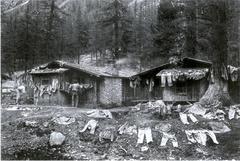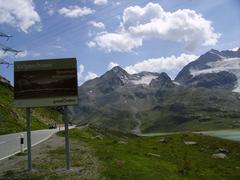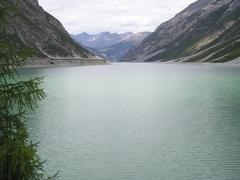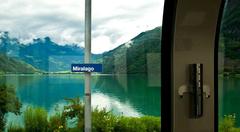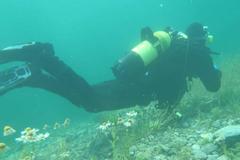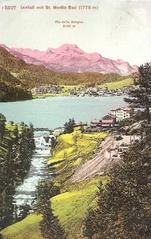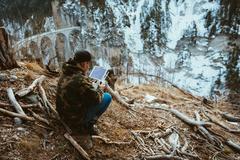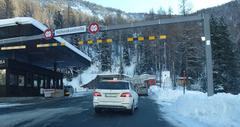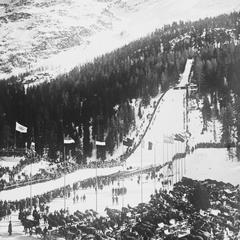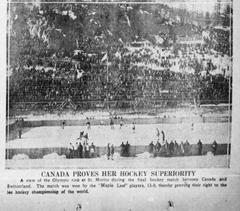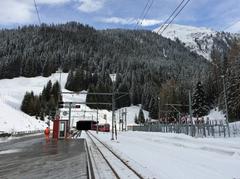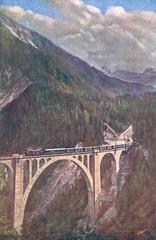
Rietberg Castle: Visiting Hours, Tickets, and Historical Guide in the Canton of the Grisons, Switzerland
Date: 04/07/2025
Introduction: The Significance of Rietberg Castle
Rietberg Castle, perched above the scenic Domleschg Valley in the Canton of the Grisons (Graubünden), stands as one of Switzerland’s most evocative medieval landmarks. Originating in the late 12th or early 13th century, the castle reflects centuries of architectural evolution, noble heritage, and regional power struggles that shaped the Alpine world. From its beginnings as a fortified keep built by the Lords of Rietberg, the castle has watched over a vital trade and military corridor, witnessing the tides of political intrigue, religious conflict, and cultural transformation. Today, Rietberg Castle is privately owned, accessible to the public only through advance arrangements, yet remains an integral part of the Domleschg Castle Trail—inviting visitors to immerse themselves in its storied past and breathtaking landscape (Wikipedia: Grisons; Graubünden Tourism; Viamala Tourism).
Table of Contents
- Historical Overview
- Architectural Evolution
- Political and Cultural Importance
- Notable Historical Events
- Modern Role and Visitor Experience
- Visiting Hours, Tickets & Accessibility
- Restoration and Preservation
- Guided Tours, Special Events & Nearby Attractions
- Frequently Asked Questions (FAQ)
- References & Useful Links
Historical Overview
Rietberg Castle’s earliest mentions trace to the 13th century, an era of feudal consolidation in the Grisons. Originally constructed by the Lords of Rietberg, its strategic location controlled the Domleschg Valley—an essential north-south Alpine corridor (Wikipedia: Grisons). The valley, historically settled by the Raetians and later under Roman rule, was by the medieval period dominated by the Bishopric of Chur, blending secular and ecclesiastical power (Schreiberschreibt: Historic Buildings in the Canton of Grisons).
Architectural Evolution
Medieval Foundations
The castle began as a fortified Romanesque tower, characterized by massive masonry designed to withstand siege. By the late Middle Ages, it expanded into a complex of residential quarters, curtain walls, and auxiliary buildings, all adapted to the rugged Alpine terrain. The central keep, with its extraordinarily thick walls, exemplifies the robust construction of the era (Graubünden Tourism).
Baroque Transformation
Significant renovations in the 17th century transformed Rietberg Castle into a noble residence. Distinctive Baroque features include:
- Ox-eye windows (Oeil-de-boeuf) in the attic and upper levels
- Keyhole embrasures for firearms, reflecting evolving defensive needs
- New residential wings along the ravine’s edge
- A rock-cut cistern in the courtyard, underscoring the castle’s self-sufficiency during conflict
These features, alongside original medieval elements, create a unique architectural blend (Graubünden Tourism).
Political and Cultural Importance
Rietberg Castle played a pivotal role in the region’s political tapestry. The Lords of Rietberg were instrumental in the League of the Ten Jurisdictions, one of the alliances that formed the foundation of the modern canton. During the Bündner Wirren (Grisons Conflicts) of the 17th century—a series of religious and political wars—the castle became an epicenter of intrigue, reflecting the broader struggles between Catholic and Protestant forces and foreign powers vying for Alpine dominance (Schreiberschreibt: Historic Buildings in the Canton of Grisons).
Notable Historical Events
The castle’s history is marked by dramatic episodes, including the infamous 1621 murder of Pompejus von Planta by Georg Jenatsch—an event immortalized in Conrad Ferdinand Meyer’s novel Jürg Jenatsch. Ownership of the castle passed through several prominent families, including the von Salis, Buol-Schauenstein, and Planta-Casparis lineages, each contributing to its preservation and adaptation over time (Viamala Tourism).
Modern Role and Visitor Experience
Today, Rietberg Castle stands as a symbol of Graubünden’s trilingual culture, historical diversity, and tradition of communal governance. Although privately owned, its exterior can be admired year-round via the Domleschg Castle Trail. On select occasions, advance arrangements may allow for guided tours or even exclusive overnight stays within the castle’s renovated residence (Graubünden Tourism).
The surrounding valley, known as the “Valley of Castles,” is home to several other medieval fortifications, making the region a haven for history enthusiasts and hikers alike.
Visiting Hours, Tickets & Accessibility
Access:
- Rietberg Castle is privately owned and not open for spontaneous visits. Access—including guided tours or overnight stays—must be arranged in advance with the castle administration or local tourism office (Viamala Tourism).
Visiting Hours:
- There are no standard public visiting hours. Visits are possible by appointment only.
Tickets:
- Ticket prices vary based on tour type, group size, and special arrangements. Details are provided upon inquiry.
- No tickets are required to view the castle from the exterior along public trails.
Accessibility:
- Due to its historic structure and hillside location, accessibility is limited for those with mobility challenges. Inquire in advance for specific assistance.
- Children are welcome but require close supervision.
Getting There:
- By Public Transport: Train to Thusis or Reichenau-Tamins, then local bus or taxi.
- By Car: Parking available near trailheads.
- On Foot: The Domleschg Castle Trail connects several regional castles, including Rietberg (Outdooractive).
Travel Tips:
- Visit in late spring to early autumn for the best weather and trail conditions.
- Wear sturdy footwear and prepare for changing weather.
Restoration and Preservation
The castle has undergone multiple restoration campaigns:
- 17th-century renovations modernized the residence and reinforced defenses.
- 20th-century stewardship by the Planta-Casparis family has ensured ongoing preservation, with support from heritage organizations (Graubünden Tourism).
- Modern conservation employs non-invasive techniques and advanced materials to maintain structural integrity while respecting historical authenticity (Savingcastles.com).
The grounds and parklands are maintained as part of the castle’s heritage status, and the site’s inclusion on the Domleschg Castle Trail supports its role in regional cultural tourism.
Guided Tours, Special Events & Nearby Attractions
- Guided Tours: Available by prior arrangement, offering expert insight into the castle’s history and architecture.
- Special Events: Occasionally hosts historical reenactments, cultural evenings, or art exhibitions—announced via official tourism channels.
- Photographic Highlights: The castle’s hilltop setting, Baroque features, and views of the Domleschg Valley provide excellent photography opportunities.
- Nearby Sites: Explore Hofberg Castle, Fürstenau Castle, and the medieval town of Chur, rounding out a comprehensive heritage tour (Viamala Tourism; Outdooractive).
Frequently Asked Questions (FAQ)
Q: Can I enter the interior of Rietberg Castle?
A: No, except by prior arrangement for guided tours or special events.
Q: What are the regular visiting hours?
A: There are none; all visits require advance booking.
Q: Are tickets required?
A: Only for interior tours or special events by arrangement; exterior views from public trails are free.
Q: How do I get there?
A: By train to Thusis or Reichenau-Tamins, then local bus/taxi; by car or via hiking trails.
Q: Is the site accessible for those with limited mobility?
A: Accessibility is limited due to steep terrain and historic architecture. Please inquire in advance.
Q: Can I stay overnight?
A: Limited exclusive overnight stays may be available; book well in advance.
Q: Is the castle suitable for children?
A: Yes, but children should be supervised due to uneven terrain.
References & Useful Links
- Wikipedia: Grisons
- Schreiberschreibt: Historic Buildings in the Canton of Grisons
- Graubünden Tourism: Castle Rietberg
- Viamala Tourism: Rietberg Castle
- Outdooractive: Rietberg Castle
- Touristplaces.guide: Rietberg Travel Guide
- Savingcastles.com: Renovating a Castle
Ready to explore Rietberg Castle and the Domleschg Valley?
Book your visit in advance, plan your route using the Domleschg Castle Trail, and enhance your experience with the Audiala app for audio guides and insider tips. Stay updated with local tourism offices for special events, and immerse yourself in the unique blend of history, architecture, and Alpine scenery that defines Rietberg Castle.


